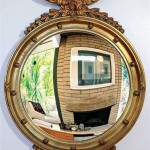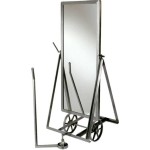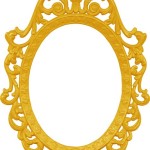How Effective Is Mirror Therapy?
Mirror therapy is a rehabilitation technique that utilizes a mirror to create a reflective illusion of movement in a paralyzed or weakened limb. This visual feedback aims to trick the brain into believing the affected limb is moving normally, potentially promoting functional recovery. While the underlying mechanisms are not fully understood, it is believed that mirror therapy activates the motor cortex and promotes neuroplasticity, the brain's ability to reorganize itself after injury.
Key Applications of Mirror Therapy
Mirror therapy has shown promise in addressing a variety of conditions, primarily those impacting motor function:
- Stroke rehabilitation
- Phantom limb pain
- Complex regional pain syndrome (CRPS)
- Cerebral palsy
The Science Behind Mirror Therapy
The effectiveness of mirror therapy is theorized to be based on several interconnected neurological processes. The visual input from the mirror creates a "virtual" movement experience for the affected limb. This visual feedback is thought to activate the premotor cortex, a brain region involved in planning and executing movements. This activation, in turn, may influence the primary motor cortex, the area responsible for controlling voluntary movements. The resulting neural activity can potentially strengthen existing neural pathways and stimulate the formation of new ones, contributing to improved motor function.
Evaluating the Efficacy of Mirror Therapy: Stroke Rehabilitation
Numerous studies have investigated the use of mirror therapy following a stroke. These studies have assessed various outcomes, including improvements in motor function, reduction in pain, and increased range of motion. Meta-analyses of these studies suggest that mirror therapy can provide a moderate benefit for upper limb motor function recovery post-stroke. The evidence supporting its use for lower limb recovery is less robust but still promising. However, the optimal dosage and duration of mirror therapy for stroke rehabilitation remain areas of ongoing research.
Mirror Therapy and Phantom Limb Pain
Phantom limb pain, a chronic pain condition experienced by some individuals after amputation, can be debilitating. Mirror therapy has emerged as a potential non-pharmacological intervention for managing this condition. The visual illusion of the missing limb created by the mirror may help the brain reconcile the mismatch between the body's representation and reality, reducing pain perception. Studies have shown that mirror therapy can significantly reduce phantom limb pain intensity and improve quality of life in some individuals.
Addressing Complex Regional Pain Syndrome (CRPS)
CRPS is a chronic pain condition characterized by severe pain, swelling, and changes in skin temperature and color. Mirror therapy has been explored as a treatment option for CRPS, specifically targeting the affected limb. The visual feedback provided by the mirror may help to normalize sensory input and reduce pain perception. While the evidence base for mirror therapy in CRPS is still developing, some studies have reported positive outcomes, including reductions in pain and improvements in motor function.
Mirror Therapy in Children with Cerebral Palsy
Cerebral palsy is a group of disorders affecting movement and muscle tone or posture. Mirror therapy has been investigated as a potential intervention to improve upper limb function in children with cerebral palsy. Some studies have reported improvements in hand function and gross motor skills following mirror therapy. However, more research is needed to determine the optimal implementation strategies and long-term benefits of mirror therapy in this population.
Practical Considerations and Limitations
Implementing mirror therapy effectively requires careful consideration of several factors. The patient's level of cognitive function and motivation play crucial roles in treatment success. The therapy requires active participation and concentration, and patients may need encouragement and guidance to maintain engagement. Additionally, the design of the mirror setup and the specific exercises performed should be tailored to the individual's needs and abilities. It's also important to note that mirror therapy may not be suitable for all individuals, and some patients may experience frustration or discomfort during the process.
Future Directions in Mirror Therapy Research
Ongoing research is exploring various aspects of mirror therapy to further refine its application and optimize its effectiveness. Studies are investigating the optimal frequency, duration, and intensity of mirror therapy sessions. The integration of mirror therapy with other rehabilitation techniques, such as virtual reality and robotic assisted therapy, is also an area of active investigation. Furthermore, researchers are exploring the use of advanced neuroimaging techniques to better understand the neural mechanisms underlying mirror therapy's effects on the brain.
Integrating Mirror Therapy into Rehabilitation Programs
Mirror therapy can be a valuable component of a comprehensive rehabilitation program. It is often used in conjunction with other therapies, such as physical therapy and occupational therapy. When considering incorporating mirror therapy into a treatment plan, healthcare professionals should thoroughly assess the patient's condition and individual needs. Clear instructions and ongoing feedback are essential for ensuring proper execution and maximizing potential benefits.

Mirror Therapy Wikipedia

Mirror Therapy For Stroke Patients How To Improve Mobility

Saebo Mirror Box Therapy Arm And Hand Function

Mirror Therapy For Stroke Rehabilitation A Viable Treatment Option Myotspot Com

Living Well Mirror Therapy Effective Pain Management For Amputees Jefferson Health

Mirror Therapy Amputee Coalition

Relieving Phantom Limb Pain Mirror Therapy And Progressive Muscle Relaxation Amputee

Using Mirror Therapy To Reduce Pain And Improve Movement

How To Use Mirror Therapy With Your Clients

Guide To Mirror Therapy And The Benefits Of Neuroplasticity Saebo








